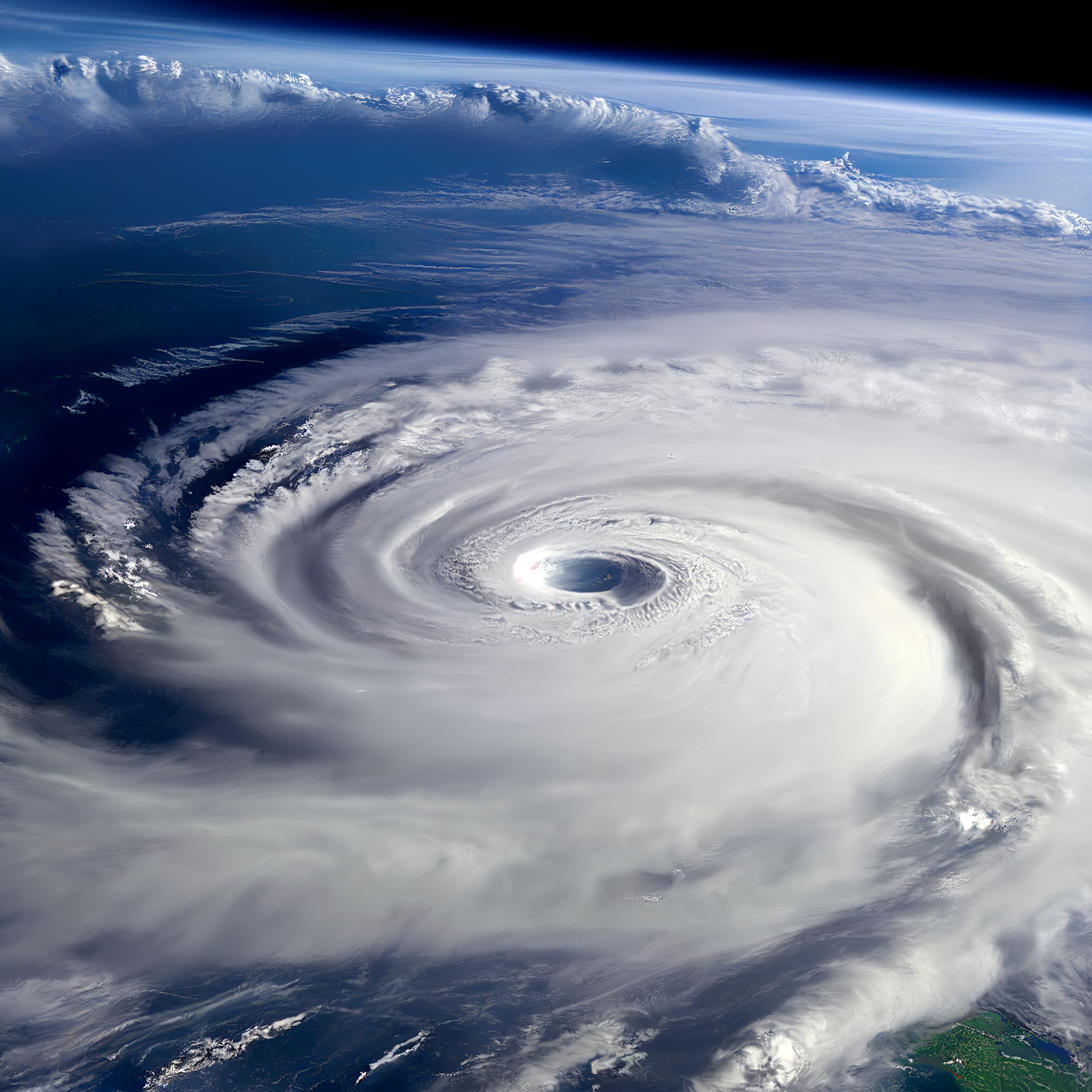MGA Faculty Q&A With Dr. Lawrence Camarota: Breaking Down The Science Of Hurricanes
Author: Sheron Smith
Posted: Tuesday, October 15, 2024 12:00 AM
Categories:
Pressroom | Faculty/Staff | School of Health and Natural Sciences
Macon, GA

Stock image.
As communities continue to recover from the devastating impacts of Hurricanes Helene and Milton, it's a stark reminder that hurricane season is not over. Understanding the science behind these powerful weather systems is crucial for staying prepared. To shed light on how hurricanes form, strengthen, and affect the world around us, we spoke with Dr. Lawrence Camarota of MGA's Department of Natural Sciences.
What exactly is a hurricane, and how does it differ from a tropical storm?
Hurricanes and tropical storms, typhoons, and a few other types of storms are all categories of tropical cyclones. These are large storms that are caused when warm, humid air rises, and create a region where the air pressure is lower. This low-pressure region pulls in air from the surroundings. If the low-pressure region is large enough, then the rotation of the Earth causes the air in the region to start moving in a circle around the low-pressure core. Beyond that, what the storm is called depends on its strength and where it is located. Tropical Depressions, Tropical Storms, and Hurricanes are the name given to these storms when they are in the Atlantic or East Pacific.
Why do hurricanes seem to form more often in certain parts of the world, like the Atlantic Ocean?
Hurricanes are driven by large amounts of evaporating water. They need large bodies of warm water in order to form. This generally means the Atlantic Ocean, the Pacific Ocean, The Indian Ocean, the Gulf of Mexico, and the Mediterranean Sea. All of these places can and do get tropical storms, but again they are only called hurricanes when they are in the Atlantic or East Pacific.
We hear a lot about hurricane “categories.” In simple terms, what do these categories measure?
The category of a hurricane is determined by the highest average wind speed. In particular, the wind is measured at a height of 10m above the ground at various locations, and the highest average speed is used to classify the storm. If the wind speed is at least 39mph, it is classified as a tropical storm; if the wind speed is at least 74 mph it is a category 1 hurricane. 96mph, 111mph, 130mph, and 157mph are the requirements for category 2-5.
Why is there often a lot of uncertainty about a hurricane’s exact path? What makes it so hard to predict?
Hurricanes are driven by the weather. The temperature of the water and ocean currents will affect the strength and size of the hurricane, regional wind and pressure patterns will push the storm around, all of which are hard to predict even under normal circumstances. Hurricanes are large enough that they significantly affect the weather that is driving them, so our usual prediction methods are less accurate than usual.
Climate change is often linked to hurricanes - are storms getting stronger or more frequent?
The main link between climate change and hurricanes is through the increased temperature of ocean water. Even slightly warmer oceans will evaporate more readily, which in turn drives hurricanes. The main effect of a warmer climate seems to be that the storms that do form tend to become stronger. However, weather and climate are complex enough that you cannot really say that any one storm would be stronger.
What’s something surprising most people don’t know about hurricanes?
A typical hurricane releases enough energy every day to supply all current energy needs of the Earth for a month.
Dr. Lawrence Camarota graduated with a B.S. in physics and a B.S. in aerospace engineering from the University of Florida. He earned a Ph.D. in physics with a focus on astronomy from the University of Arizona. He is a member of the American Association of Physics Teachers, the Royal Astronomical Society, and the Friends Society. His areas of interest are astrophysics, cosmology, electronics, and wavelets.